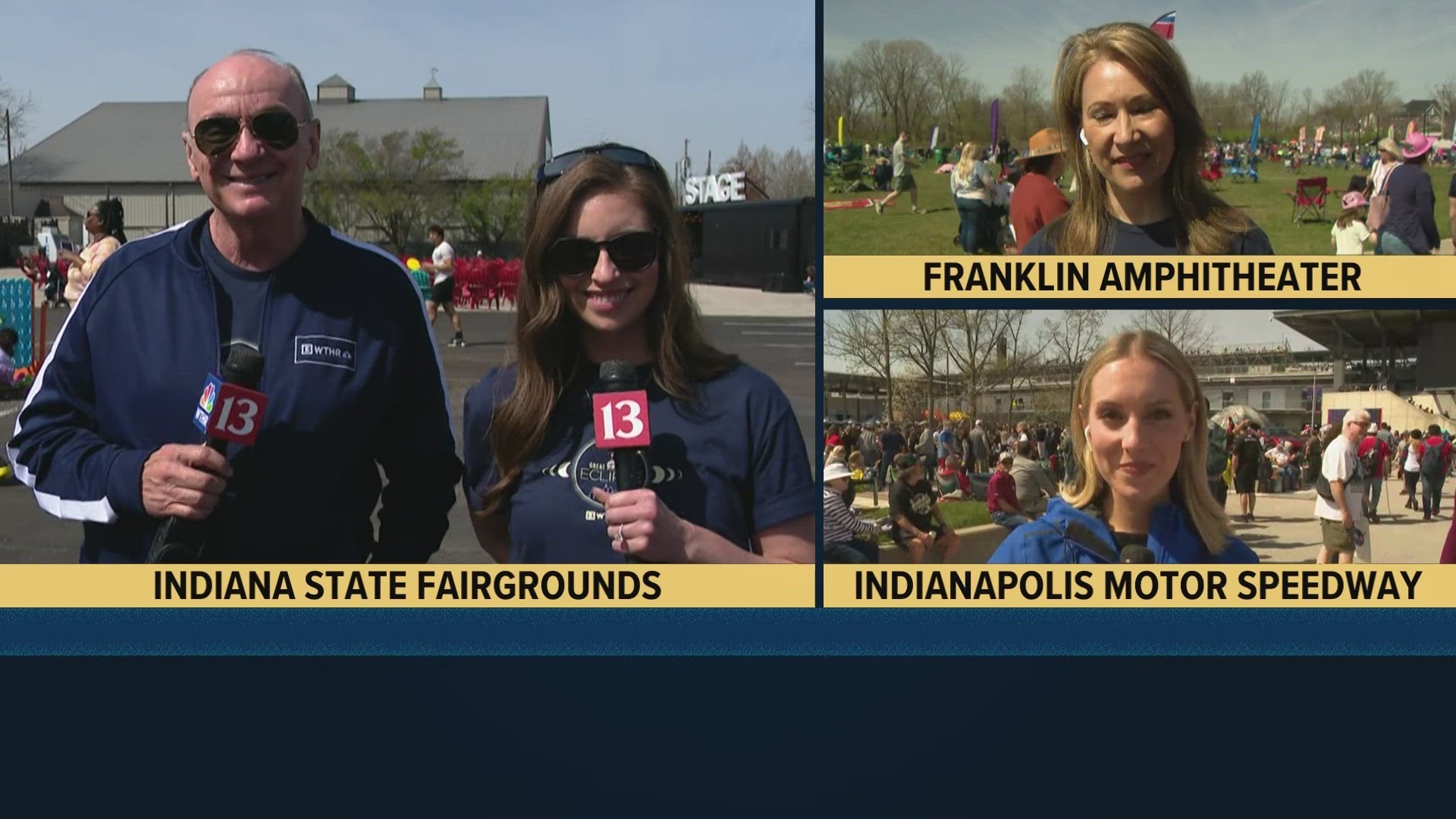INDIANA, USA — What about clouds in Indiana during the total solar eclipse? While we likely won't see a crystal clear sky, high & thin cloud coverage will be possible but shouldn't cause major viewing restrictions due to the transparency of high clouds. Compared to other states, Indiana may fare better. Let's dive into the details.
(Note: This is a constantly evolving forecast. Tracking rain within a couple hours can be difficult, let alone tracking cloud chances over the span of the 13 minutes that totality is coming to Indiana. Check back for more details.)
Tap HERE to track the clouds with our interactive radar.
What's the weather setup?
Central Indiana remains in a mainly sunny set-up at this hour but with the expected bouts of high cloud cover and remnant contrails from jetliners flying within a nearly saturated 25-35,000 foot layer.
We expect there will be continued intervals of cirrus and contrails for the remainder of the day with varying amounts of coverage and density. The greater coverage based on satellite trends looks to be along and especially south of I-70.

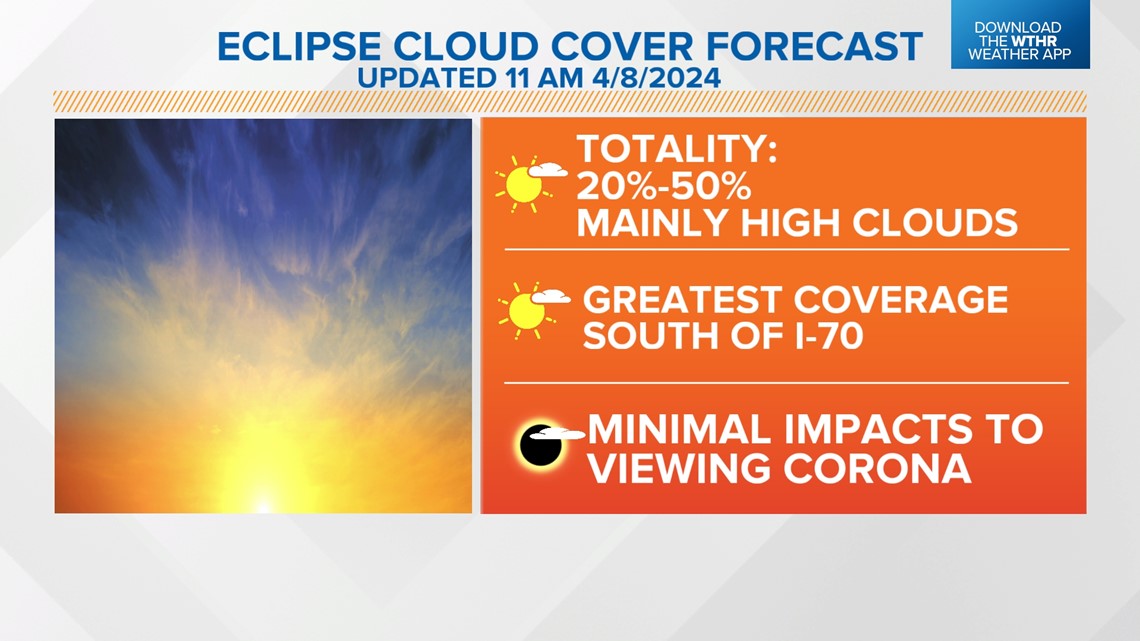
What types of clouds can we expect?
Glad you asked! Not all types of clouds will block the eclipse equally. Low and mid level clouds tend to be more dense and thicker with higher ice/water content, making it harder to see the sun. High clouds bring more of a veiled sunshine, depending on how thick they are.
Meteorologist Sean Ash explains that a high, thick cirrus deck would be trying to look at the sun with a tissue or dryer sheet in your way.
If you have to have clouds, higher level clouds are best because we will still see some of the eclipse, but with lower definition. The corona may be very difficult to see. Lower level clouds will just make it look dark in general, like a cloudy evening.
We are expecting some high-level clouds to be floating across Indiana. There's a chance they are pretty thin, which would only cause minimal impacts on totality viewing.
How will the sky look?
Noon: By midday, or just three hours before totality, the sky is expected to be bright and mainly sunny with very limited cloud coverage. As a result, temperatures warm rapidly within the warm sector of the low pressure system to our northwest. There may still be some mid/high-level clouds, but the overall coverage at this time is only anticipated to be 30% or less.
3 p.m.: Just before totality, temperatures reach the mid-70s. Remember that during totality, regardless of how much cloud cover is around, the sky will get darker and temperatures will drop some 3-5 degrees. In the distance, you will see an orange, sunset-like glow. Overhead in some areas, there may be some thin-moderate cirrus clouds, partially blocking the view.

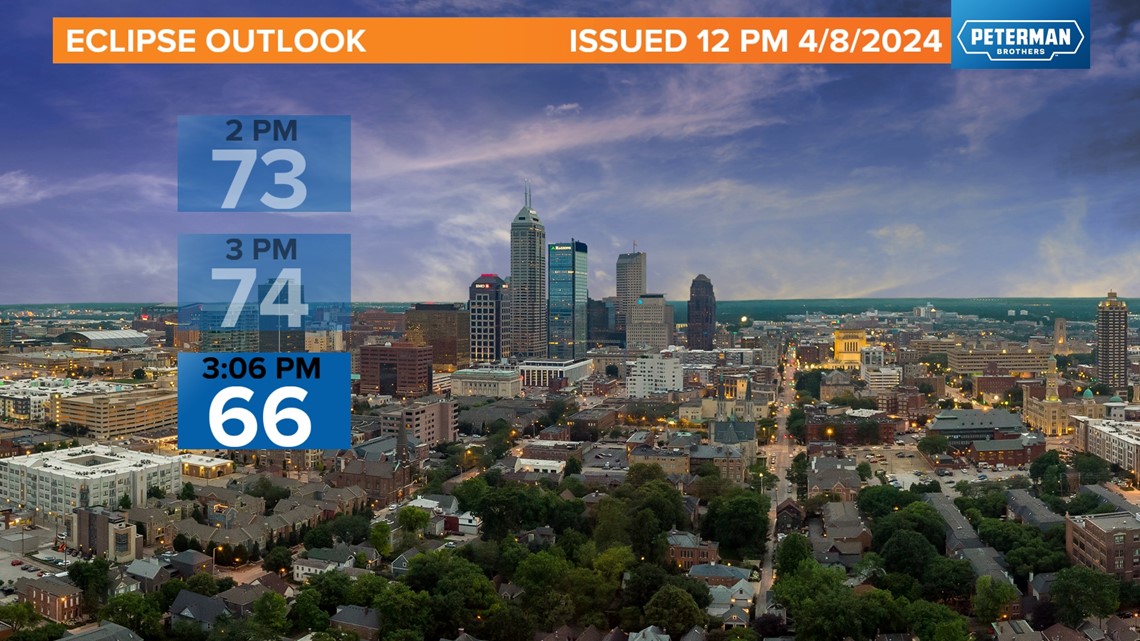
During totality, if we get a clear enough sky, stars, planets and even a comet may be visible. The bright "stars" closest to the sun will be Mercury and Venus.
IMPORTANT TIMES TO NOTE: Every city will have a slightly different timeline of the eclipse from beginning to end, but for the Indianapolis metro:
1:50:33 p.m. Partial eclipse begins
3:06:06 p.m. Totality begins
3:07:59 p.m. Maximum eclipse
3:09:43 p.m. Totality ends
4:23:13 p.m. Partial eclipse ends

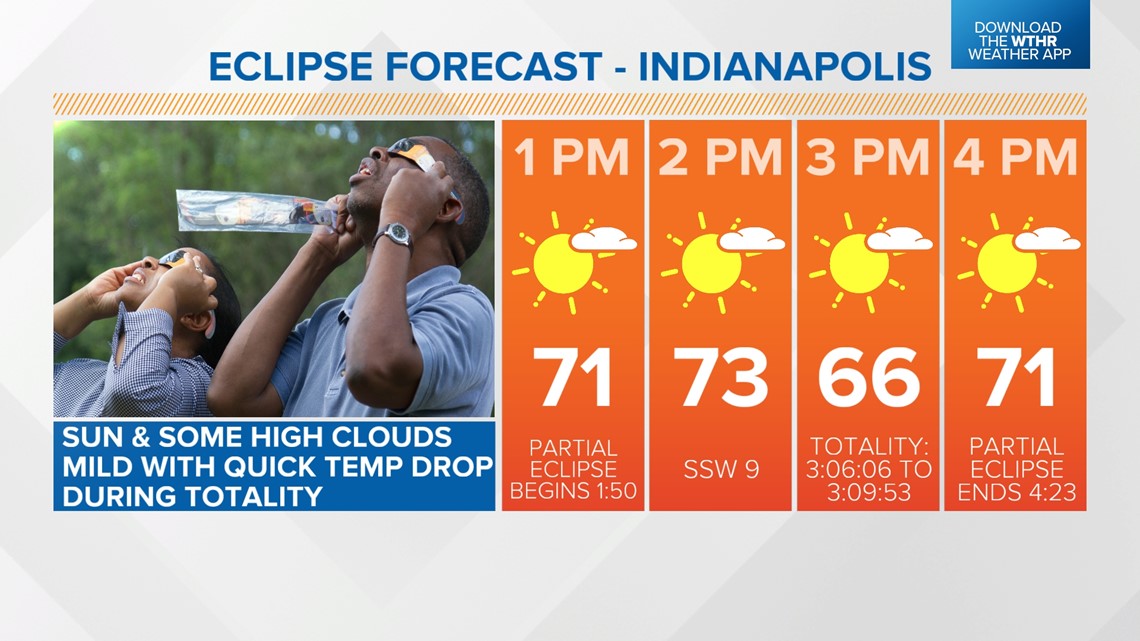
What will the clouds look like across the state?
The biggest potential "fly-in-the-ointment" to a perfectly clear sky today will be the much-discussed high clouds drifting northeastward to create a thin layer highly aloft in some areas. For now, we're keeping the 20%-40% forecast high cloud forecast during totality... but potentially higher in some areas.

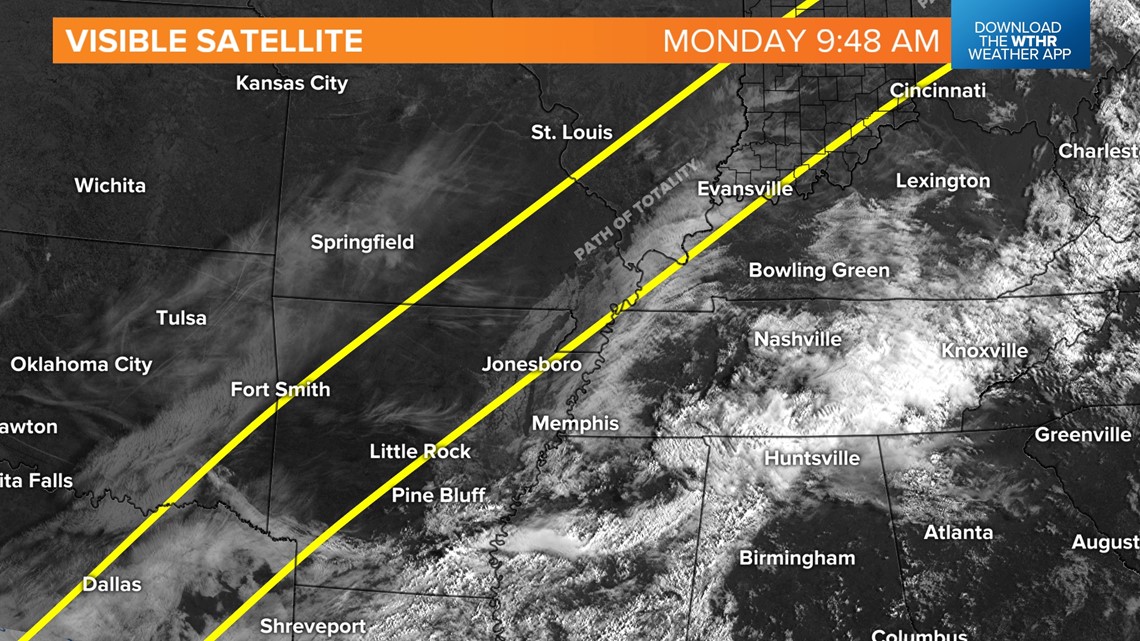
You can also expect mild temperatures for those standing outside... and pretty decent viewing conditions at this time. Expect 70s during totality. Temperatures will likely drop by 5-10° once we go into darkness, but expect to rebound fairly quickly afterwards.
What about the rest of the United States?
Indiana may be one of the best states to see the eclipse. Expect a few high cirrus clouds, but we should still be able to witness totality pretty easily. Maine will also see good conditions with mainly clear skies. The worst spots to be will be across Texas and upstate New York with rain, storms and clouds will be likely.

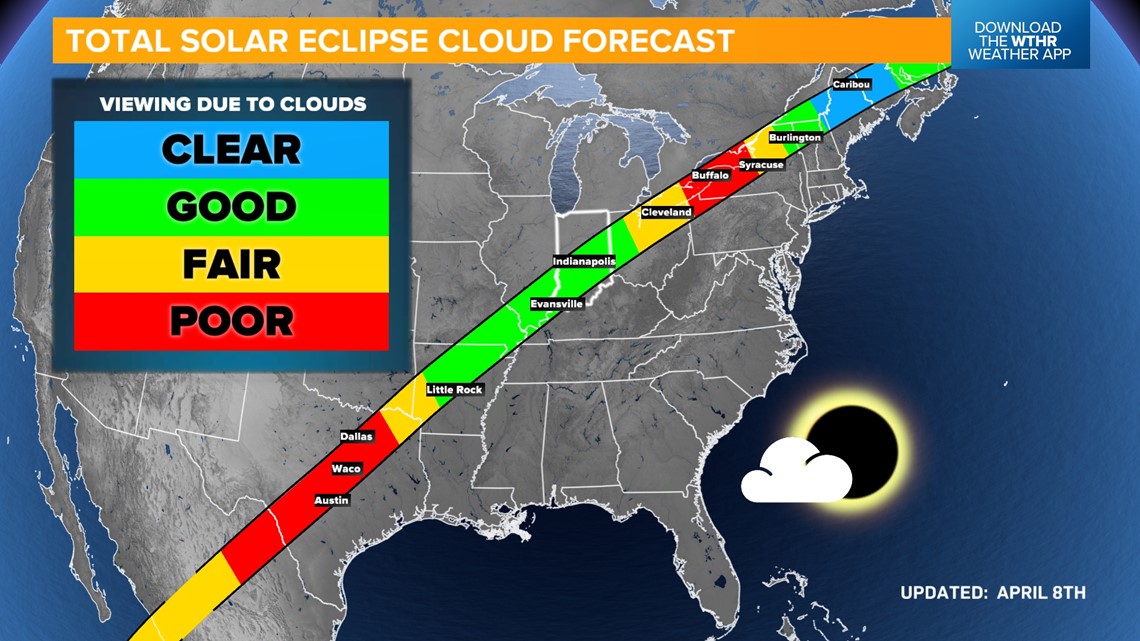
Remember to take in the moment and truly enjoy an amazing event that central Indiana gets to be center stage for. We'll be keeping you updated all day with live coverage on WTHR and wthr.com.
What else can you see during totality?
You'll see the moon block the sun looking south-southwest. With the clearest of skies, you should be able to see Venus, Jupiter, Mars, Saturn and Mercury. Plus, we may faintly see a comet just above the sun, named Comet 12P/Pons-Brooks.
Indiana is expecting some high clouds passing by. The view may be blurred just a bit. You should be able to see some of the corona, but some of the planets may be tough to see. It may be very tough to see the comet from Indiana.
It all depends on where the cirrus clouds will be. If the sights align with breaks in the clouds, you'll get a great view!

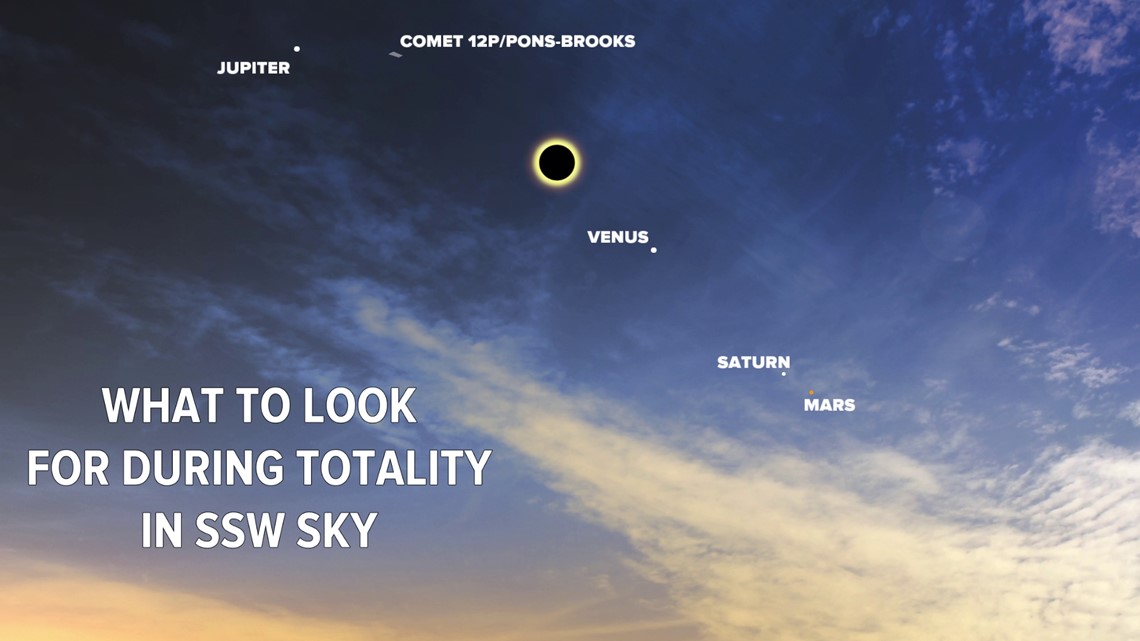
We will continue to update this cloud forecast up until the eclipse.
-13News Weather Team

